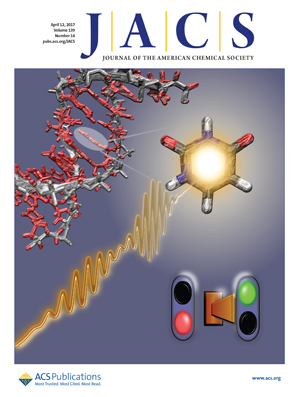Controlling Photorelaxation in Uracil with Shaped Laser Pulses: A Theoretical Assessment
10-Feb-2017
J. Am. Chem. Soc., 2017, 139 (14), pp 5061–5066
The RNA nucleobase uracil can suffer from photodamage when exposed to UV light, which may lead to severe biological defects. To prevent this from happening in most cases, uracil exhibits an ultrafast relaxation mechanism from the electronically excited state back to the ground state. In our theoretical work, we demonstrate how this process can be significantly influenced using shaped laser pulses. This not only sheds new light on how efficient nature is in preventing biologically momentous photodamage. We also show a way to entirely prevent photorelaxation by preparing a long-living wave packet in the excited state. This can enable new experiments dedicated to finding the photochemical pathways leading to uracil photodamage. The optimized laser pulses we present fulfill all requirements to be experimentally accessible.
The cover to this article:



